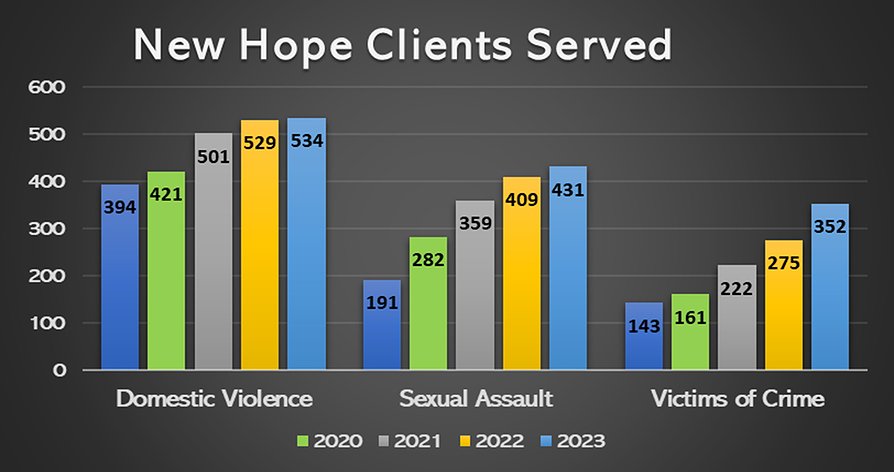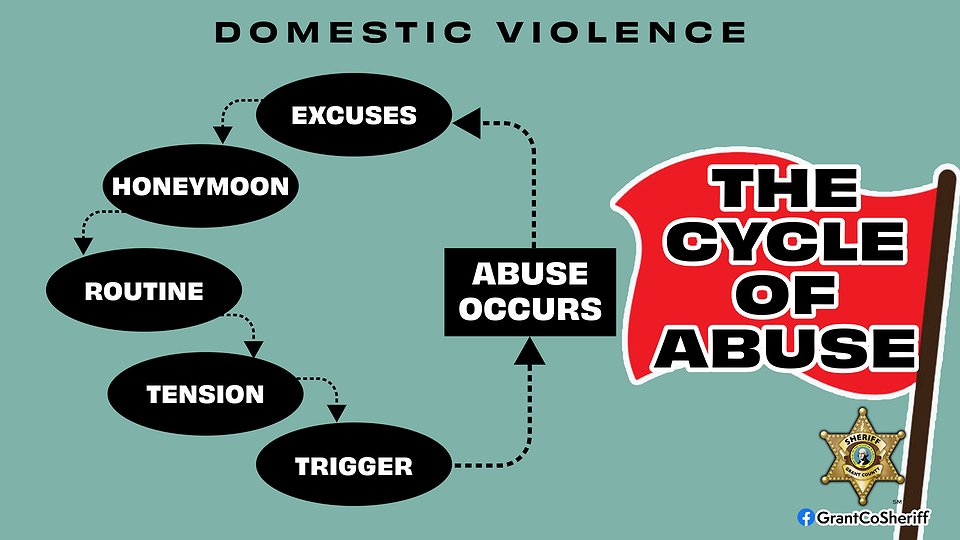A cycle of abuse
JOEL MARTIN | Hagadone News Network | UPDATED 1 year, 1 month AGO
Joel Martin has been with the Columbia Basin Herald for more than 25 years in a variety of roles and is the most-tenured employee in the building. Martin is a married father of eight and enjoys spending time with his children and his wife, Christina. He is passionate about the paper’s mission of informing the people of the Columbia Basin because he knows it is important to record the history of the communities the publication serves. | October 25, 2024 3:45 AM
MOSES LAKE — On a single day in October, the Moses Lake Police Department received 62 calls for service, according to its records. More than one in eight of those was a domestic incident.
“We’re seeing an uptick,” said Abraham Tapia, a legal and community advocate with New Hope, which provides domestic violence support in Grant and Adams counties. “It’s not unusual to see people getting arrested for simple domestic violence charges like assault in the fourth degree on a daily basis. We’re very used to it.”
The population growth in our area is a factor, Tapia added. Nonetheless, the numbers tell a grim story. New Hope served 534 clients in 2023 who were victims of domestic violence, a 35.6% increase from 2020, while the population of Grant County rose only 4.2% in the same amount of time and Adams County barely 1%.
Since 1997, Grant County has had eight deaths from domestic violence homicides and Adams County has had three, according to the Washington State Coalition Against Domestic Violence.
The month of October was declared Domestic Violence Awareness Month in 1989, according to the National Child Traumatic Stress Network, as a time to acknowledge survivors and give voice to the victims. The name was changed to Domestic Violence Action Month a few years ago, Tapia said, reflecting a more proactive approach.
“Domestic violence takes many different forms,” said Grant County Sheriff’s Office Public Information Officer Kyle Foreman. “It could be physical abuse; it could be emotional abuse; it could be psychological abuse, or it could be a combination of all of those. Victims can be male or female; it can happen in same-sex or opposite-sex marriages.”
It’s all about the abuser maintaining control and power, both Tapia and Foreman said. And all too often, it works.
“Unfortunately, the abusers get the upper hand most of the time,” Foreman said. “In many cases, their victims are too emotionally or physically abused or scared to leave, or they have nowhere to go.”
There is help available, Tapia said, at New Hope. The agency has a 24-hour crisis line and assistance available for anyone who asks.
The trouble is, sometimes it’s really hard to ask.
“The victim needs to decide to leave and then act on that decision,” Foreman said. “But the problem also is that victims who leave relationships have a higher incidence of being killed, and so that fear is on their mind also, preventing them from leaving.”
Victims of abuse are frequently isolated from friends and family; an abuser may keep the victim from having access to money or monitor their communications. If there are children in the home, the abuser has that much more leverage over their victim.
“Often a threat that the abuser will use on the victim is is threatening to take away their children,” Foreman said. “Any threat to maintain control over their victim.”
Domestic abuse tends to happen behind closed doors, which means the abuser and the victim may be the only ones who know about it. Friends and family may see only the facade that the abuser creates.
“A lot of abusers are … very personable,” Foreman said. “You know, many times the victim will be swept off their feet by the attention that this person is giving them early in the relationship, and it's not till a little later on that the narcissistic and abusive tendencies start to show.”
“One big (red flag) is isolation,” Tapia said. “If a person is being isolated from their family (or) doing things out of character, especially after getting involved in a new relationship, that's one thing that we warn family members about. If you're seeing that your loved one is starting to become more distant, it's always best practice to check in with them.”
Don’t expect the problem to be solved right away. The average victim leaves their abuser and then goes back seven times before getting out for good, according to the National Domestic Violence Hotline. That can cause friends or family to think that the victim isn’t really serious about leaving, or that the abuse can’t be too bad if they don’t leave. Then, too, the abuser may seem to change after the victim leaves and entice them into coming back.
“It's just one big circle,” Foreman said. “The abuse happens, and then after a little cooling-down period, the abuser offers excuses to the victim, or an apology. And then there's kind of a honeymoon phase where they're working on being happy again. Then they go into their routine of life and tension happens, and then there's some trigger, and abuse occurs again. And the cycle goes on until the cycle is stopped.”
Something that often goes unnoticed is that men can be victims of abuse as well, but are much less likely to report it or seek help due to embarrassment or shame.
“They probably think that they’re not going to be believed,” Tapia said. “But our job here is not to investigate any of the allegations people come to us with. That’s the police’s job. We want to stay in our lane and just be there for the people who are hurting and need somebody to have their back.”
Domestic violence, regardless of the victim, tries to hide in a way, Foreman said.
“It's not something that may be really visible,” Foreman said. “It's something that certainly the abuser wants to keep hidden. The victim chooses to keep it hidden for self-preservation, and so it may be very difficult to spot. If a victim does take you into their confidence, that's a huge step right there.”
Because they respond to so many calls, law enforcement officers in Grant and Adams counties carry information with them about how to access New Hope’s services, Tapia said.
“Sometimes people just need a bus ticket out of town if they're stranded here and they're in an abusive situation,” Tapia said. “We can step in and help with stuff like that. We provide shelter to all victims of domestic violence. That's a huge part of what we do is providing that emergency shelter.”
There’s not a lot the police can do about emotional or psychological abuse, but once it turns physical, they can step in, Foreman said. And when they do, the abuser is going to jail.
“It's one of the few things that we have open here at the jail right now,” Foreman said. “We don't take in people with misdemeanor warrants right now, because we don't have the capacity in the jail. But … there's always room at the Grant County Jail for domestic violence abusers.”
Once the victim is finally out for good, they’re not left on their own. New Hope can step up with medical and legal advocacy, support groups and therapy. The victim has a chance to start a new life without the abuser.
“A survivor of domestic violence who has left their abuser keeps saying, ‘I don't know why I didn't leave sooner, but there were (reasons) that I just couldn't leave. But when I finally got the courage to do it, it was the best decision I ever made,’” Foreman said.
Correction: The statistic for domestic violence deaths was stated incorrectly in the initial version of this story. According to the Washington State Coalition Against Domestic Violence, the eight deaths from domestic violence in Grant County is a count from 1997-2023. It should be noted that local law enforcement responds to dozens of calls each week associated with domestic violence in various forms. The error has been corrected above.
ARTICLES BY JOEL MARTIN

Wahluke Jr. High earns Culture Kick-Off Award again
MATTAWA — Wahluke Junior High School has been honored with the 2025 Culture Kickoff Award for the second year in a row, according to an announcement from the Association of Washington School Leaders and the Association of Washington School Principals.

Moses Lake firefighters meet the community with hot cocoa
MOSES LAKE — Moses Lake firefighters held their Christmas community event at ground level this year. “The last few years, we’ve done what we call the campus tour,” said MLFD Battalion Chief Schrade Rouse. “We would put our Santa on top of the truck and ride a neighborhood route so that people could come out and visit with us if they wanted to. But recently we were restricted by (state law) about letting Santa Claus ride on top to the truck. So now we’re trying a stationary (event).”

Women combine talents to open businesses in shared space
MOSES LAKE — Three woman-owned businesses held a ribbon-cutting and grand opening at their new location in Moses Lake Thursday. The office at 815 W. Third Ave. holds an accounting firm, a massage service and a waxing room. “We’re a one-stop shop,” Mandy Schuh said. Schuh is the owner and founder of both Pillar Rock Accounting and Seventh Sense Serenity massage service. As Pillar Rock, she and her assistant Esmeralda Sanchez handle after-the-fact bookkeeping: general bookkeeping, payroll processing and bank and credit card reconciliation. That’s the business people see when they walk in the front door. In a quiet, gently-lit room in the back of the office, Schuh massage services, including Swedish, intraoral massage, myofascial, reflexology and the Japanese technique called Reiki.





